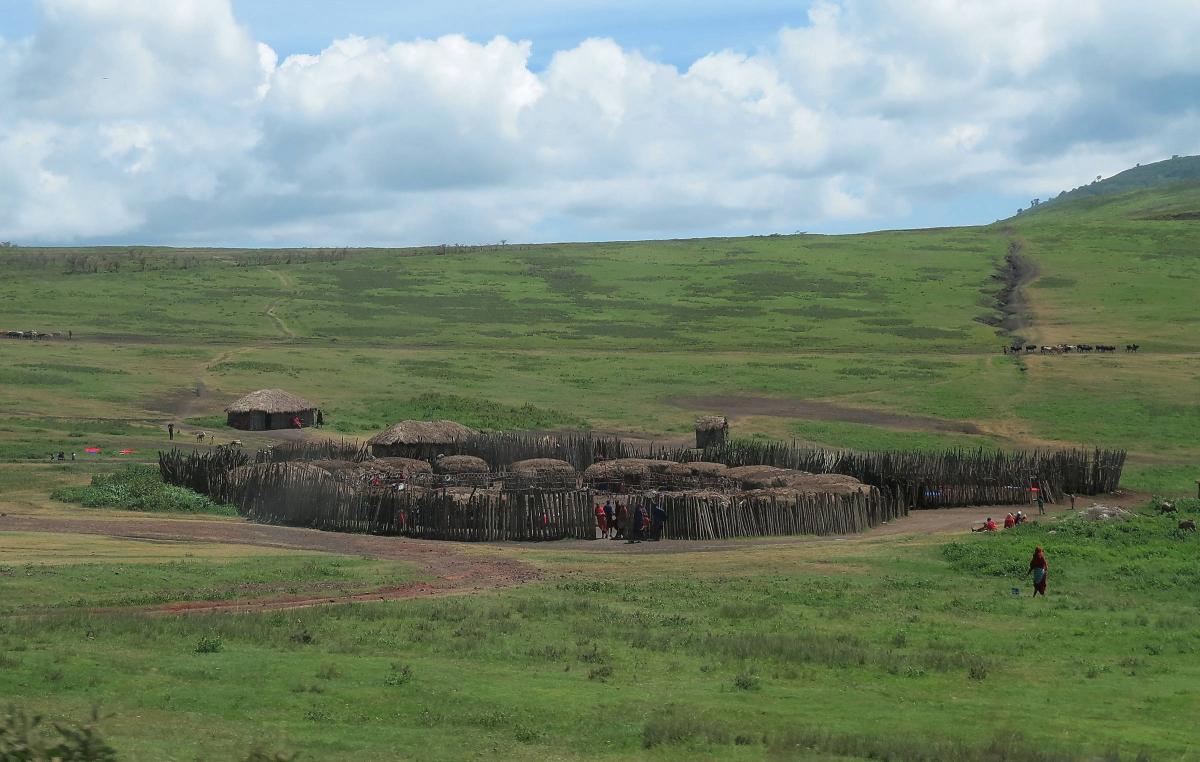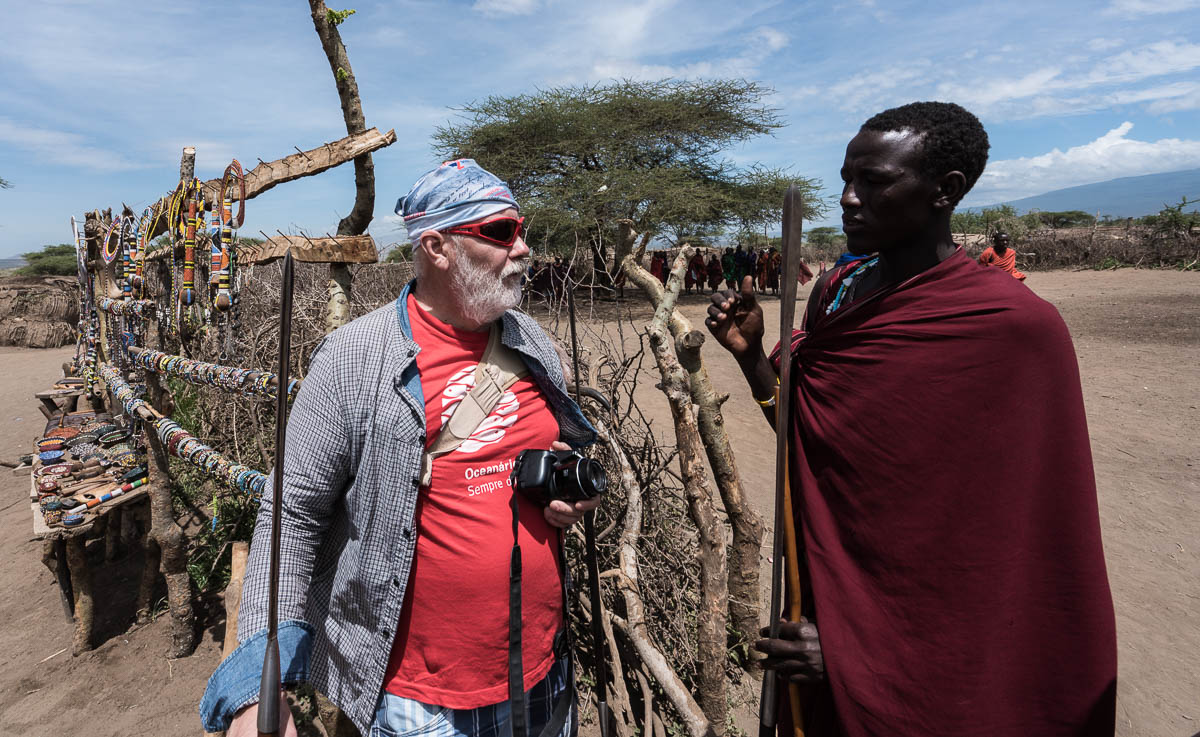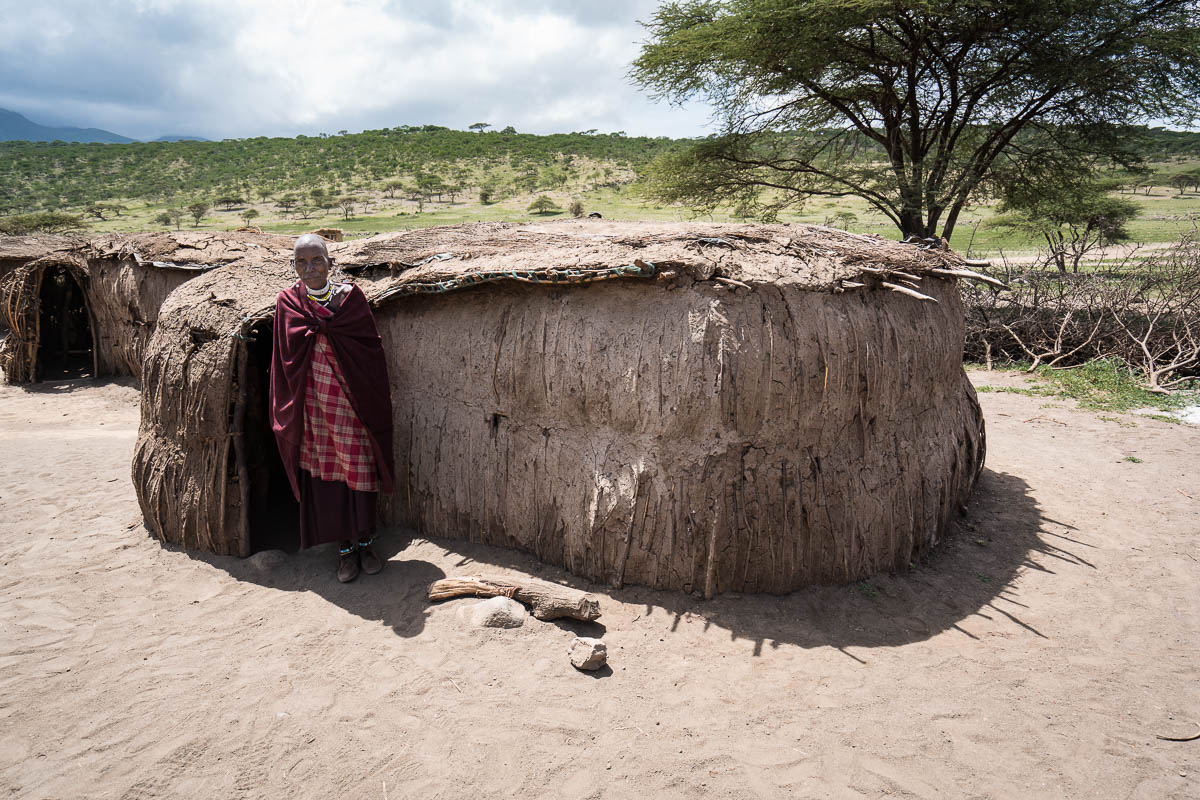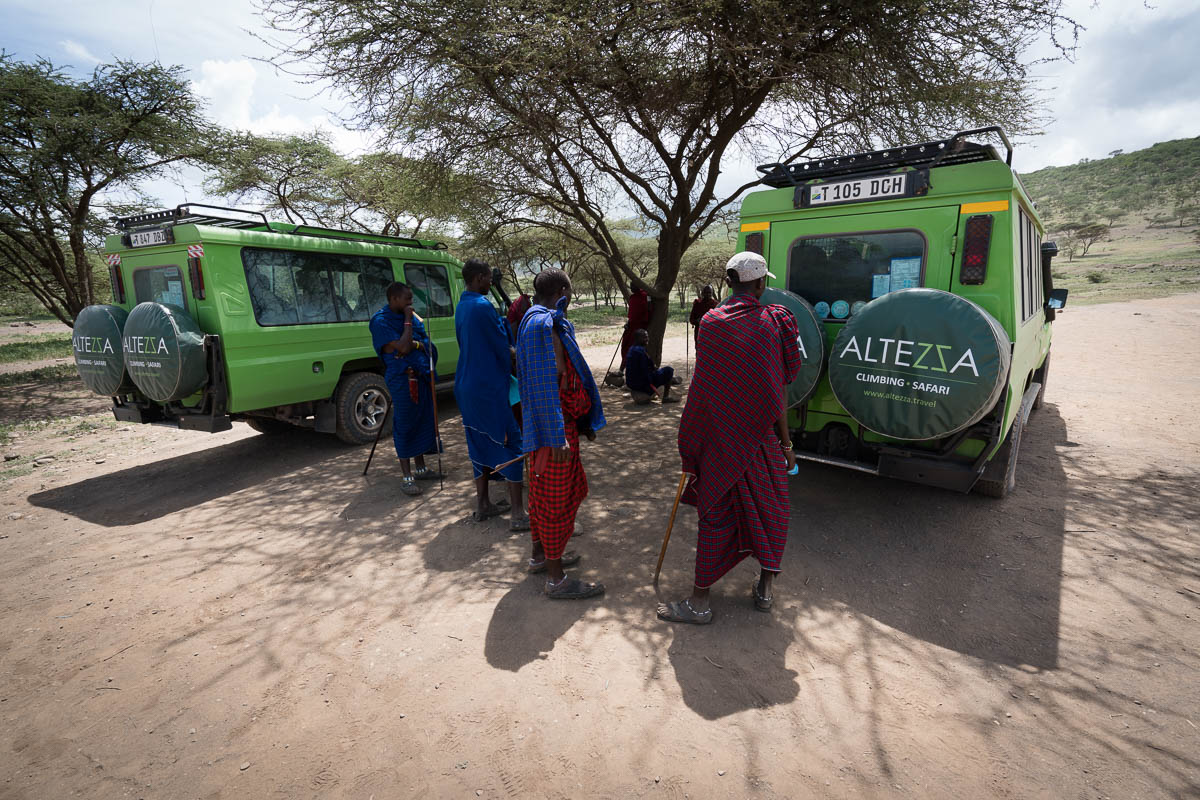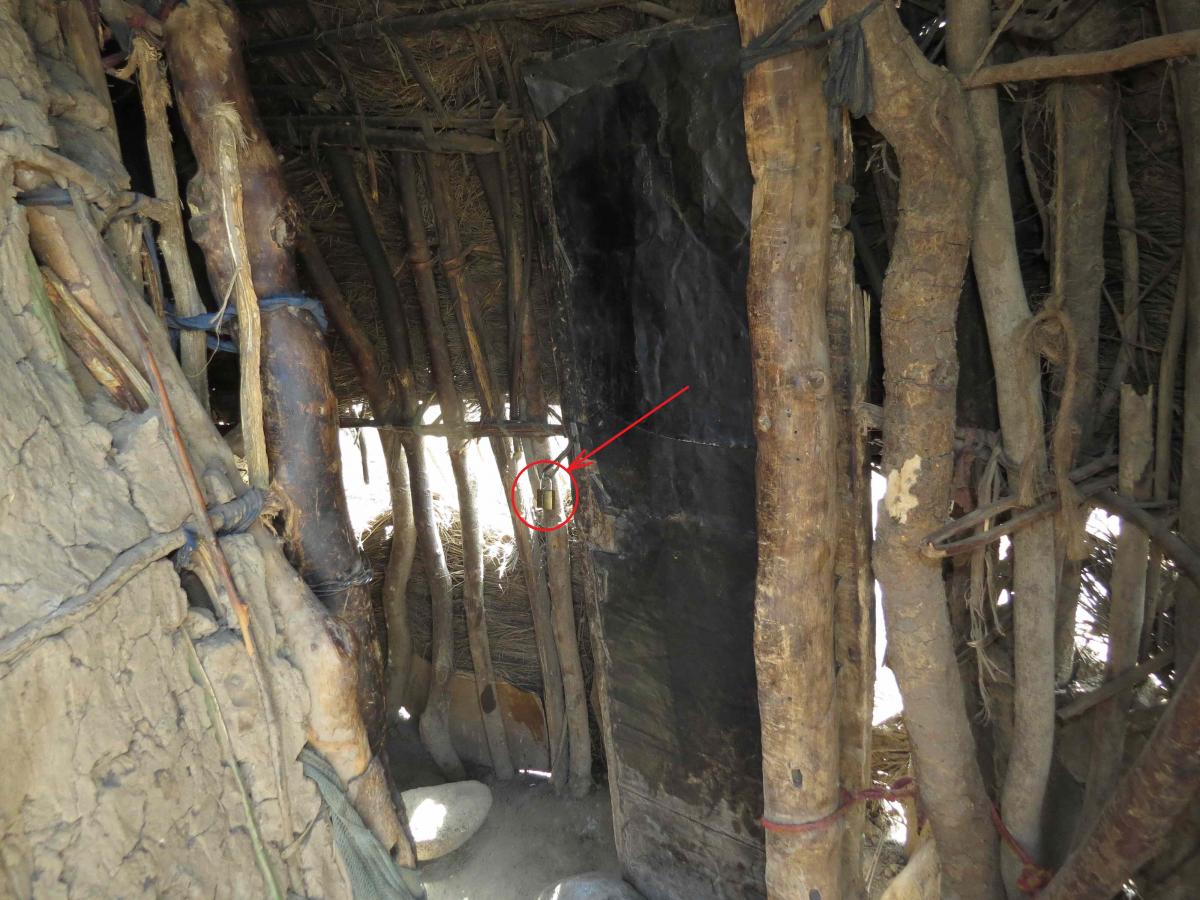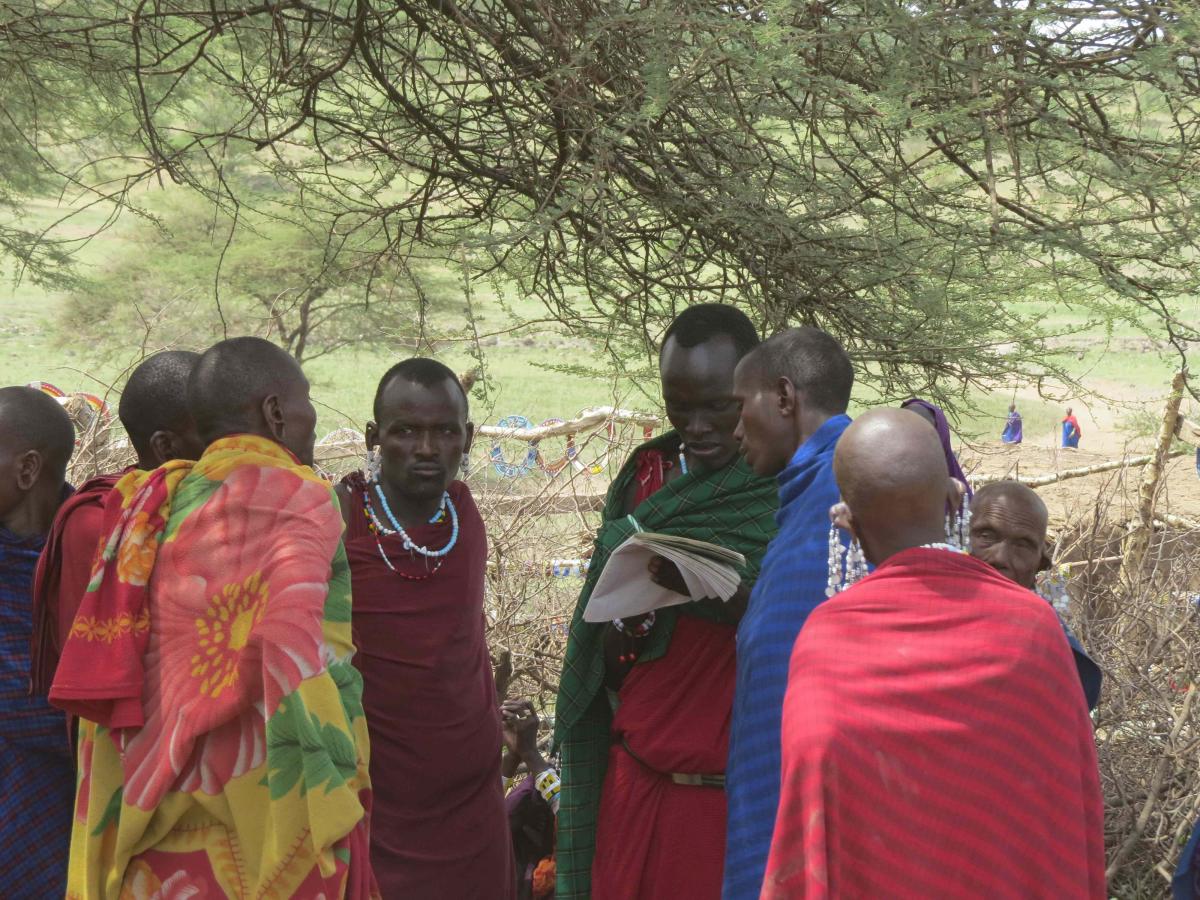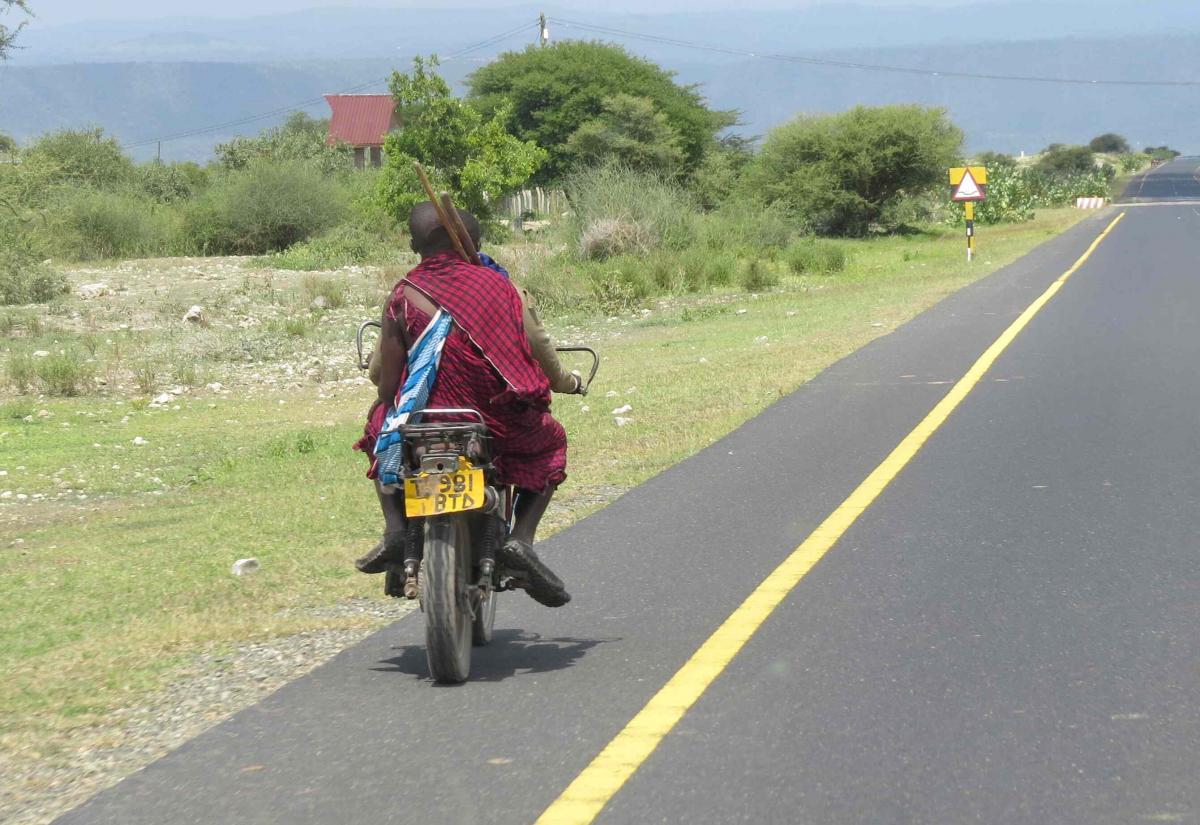January 30, 2016
An eye for a Maasai.
The Maasai are a semi-nomadic African tribe who’ve almost entirely rejected modern civilization in favor of their traditional way of life. For more information about them, check out the Internet – the text below is that of an ‘inquisitive observer’ who just happened to be passing by.
For just $50 from each car, the Maasai men gathered to perform their traditional greeting.
Welcome to the village! It consists of around 30 huts and approximately 120 inhabitants.
Women to the left, men to the right. Now we’re ready to start the traditional Maasai jumping dance. But for some reason their jumping wasn’t all that energetic. There are some livelier examples to be found online.
The school where the kids are taught to read and count. I’m not sure about writing – I didn’t spot any writing utensils.
Inside a hut.
Petrovich discussing some important matters with the tribal leader’s son.
What do the locals have to say? Well, they live a pretty poor life (as you can see from the photos). They breed cattle. There are no sources of clean water nearby, so they drink milk, animals’ blood and something else (I can’t remember).
The local Maasai eat meat… and only meat (African Atkins!). They say there are no vegetables at all in their diet. This is probably true – we saw nothing growing around their villages. It remains a mystery to me how they get other essential nutrients like vitamins. Maybe they nibble on some grass by the roadside… Walking seems to be their only mode of transport – they don’t have any vehicles, and we didn’t see them riding any donkeys or zebras.
They reject modern medicine, and assured us they only use their traditional herbal medicine – various herbs, tree bark and roots.
The Maasai practice polygamy. The parents choose a wife (or wives) for their son. It’s all part of their traditions. One of the first questions from the men in our group was: “How many wives do you have?” Hmm…
One thing you notice is how good they are at telling their stories. Apparently, they get quite a lot of tourists visiting them. Perhaps they have been taught the secrets of being a good tourist guide :).
Having said that, there were virtually no traces of modern civilization spotted in the village. The exceptions were some plastic buckets in the corners of the huts, sandals made of car tires, and some minor things like small (decorative more than anything) padlocks on hut doors, or someone wearing an old watch.
I have to say that the padlocks, albeit very small, are not exactly a sign of primitive social relations within the tribe. What do they need locks for? It looks like civilization has some downsides too.
More photographic evidence of the Maasai’s shift toward civilization is this picture of them with a notebook.
Obviously, they’re not jotting down the idiosyncrasies of tourists for future reference. My hypothesis is that they’re keeping track of tourist visits, so they can distribute their earnings among themselves. They took out the notebook immediately after they performed their dance and jumping.
The Maasai are also OK about using ‘modern’ means of transportation. However, I’m not sure these guys really were Maasai or just pretending to be. Just so that you know, in Tanzania there are lots of people pretending to be Maasai. The locals really love to use the Maasai theme with the tourists:
Maasai, or people just pretending to be Maasai, were frequently spotted along the roadsides. Of course, it’s hard to tell who is genuine, but I’m pretty sure the people in these pictures were actually Maasai.
One of the reasons for them to be on the roadside is to pose for photos with tourists for money. The interest in money also points to some degree of civilization. By the way, the black clothes and faces painted white show that this is festive attire. As the tribal leader’s son told me, there are three main colors for their clothing: blue is salutatory, red is for working (so they can see each other better in the bush), and black is festive.
When I quietly asked a Maasai whether any of them had a cellphone, he first pretended not to understand what I was talking about, but then confessed and said yes, some members of the tribe do have mobiles. What I want to know is how they recharge them. There was no sign of electricity at all in the village! Perhaps they only switch their phones on to make a call, and then immediately switch them off again. Their Nokias or whatever could last for months like that without being charged. I’m afraid I don’t know the answer – I couldn’t dig that far into Maasai secrets.
Let’s see if I can find any more interesting facts about the Maasai. Here is what Wikipedia says:
Notable Maasai people:
David Rudisha – middle-distance runner, 2012 Olympics champion, and 800-meter world record holder.
Bolaji Badejo appeared as the Alien in the film with the same name
That’s the way it is. Civilization is one thing, the Maasai are another. Life here runs its course. On the right hand side of the road, the Maasai lead donkey caravans carrying some sort of goods, while on the left there are zebras and giraffes grazing. They don’t interfere with each other, and everyone’s happy.
The rest of the photos from the Maasai village are here.

